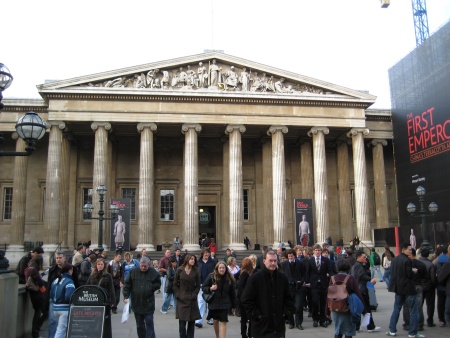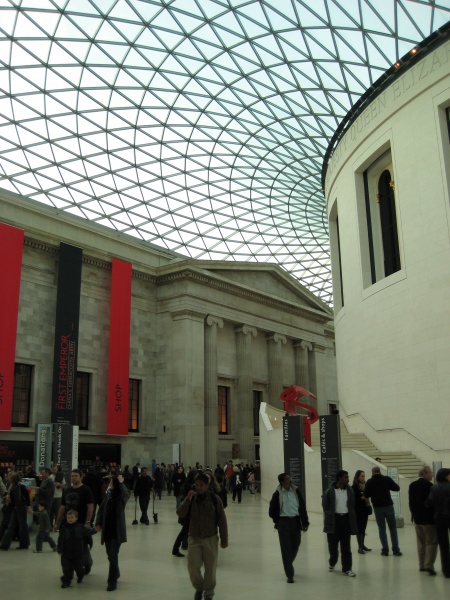The First of Many Trips to the British Museum
Living in a capitol city has some major perks. One of them is the abundance of free museums. In my younger days (my first trip to London 15 years ago — wow!) I was amazed and awed by the British Museum. So, you would think, living a train or bus ride away, I’d be there every weekend. Stupid me, I hadn’t gone even once in 7 months. This past weekend, I vowed to change that and see how the place sized up when I was older and wiser.
Well, it’s still pretty impressive. It doesn’t feel as large and some of the pieces I remembered are smaller, but still very big (more on that in a minute). But it’s still an amazing museum. I need to book some tickets for Carolyn and myself to see the terracotta warriors this spring. But for my first of many trips back, I chose to focus on the Egyptian (non-mummy) part of the museum. I figure, with free admission, I can just pop in for an hour and really check out each part. So that’s what I did.

The classic front to the museum. I love how it’s on this seemingly tiny little charming street filled with old book and antique shops as well as a decent tourist pub and other touristy kind of food.

After you enter the main entrance, you find yourself in the Great Court which is definitely not the same as it was 15 years ago. It’s a decent combination of old and new and the glass roof gives a sensation of being outside without actually being there so you can still have works of art out in the open.

This head was part of a large statue. When I talked about how huge things felt merely big now, this would be it. Next to the head is the arm of the statue. In my younger days, I remember it being 100 feet long. Now, it’s a mere 20 feet long which would still make the full statue gigantic 🙂

This is the crown of the museum and a perfect example of colonialism taking other country’s heritage. The Rosetta Stone has the same text in Hieroglyphics, Demotic and Greek. It allowed people to finally understand the language of Ancient Egypt. What I find even more fascinating is that, by the time the stone was carved, no one really used Hieroglyphics for writing. It was the original written language of the Egyptians. However, as the written language evolved from pictures and symbol into more abstract characters, it was used more for ceremonial and religious purposes. Demotic (the language below it and more recognizable as a language to our modern eyes) was the day to day written language of the literate Egyptian. Greek, at this point, was the language of official Egypt, the language of the government.
What’s sometimes even harder to realize is that most people of this time couldn’t read any of these languages. Until the printing press and the Industrial Revolution democratized the written language by allowing for mass production of words, literacy was something that was unobtainable to most people. It wasn’t until the 19th and 20th century that literacy began to spread far and wide (particularly through the industrialized world — there’s still many people who cannot read or write).
Anyway, that was my first trip to the British Museum. It’s made me think and made me marvel at some amazing things. I don’t know which part will be next, but I hope to share it with you here.

November 6th, 2007 at 8:16 pm
Not true! Your first trip to the British Museum was with us in 1994. You dragged us from mummy to mummy to mummy and irritated your sister something fierce.
We drove 710 miles today – from Grand Rapids to Joplin, MO.
So tired! (Timmy was perfect in the car!)
November 8th, 2007 at 10:58 pm
the rosetta stone is cool. but the national gallery is where its at. lorraine vs turner in the octagonal (or close to it) room. plus all the old renn stuff. hhhmmm art taken by force…